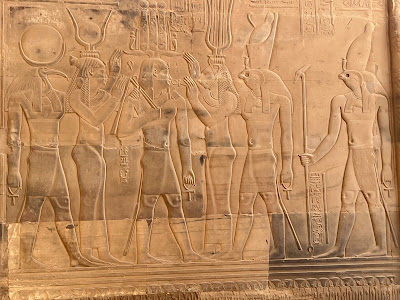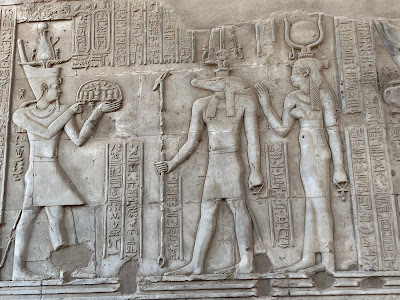As is the an with many temple it was filled with sand which preserved the pillars, hieroglyphs and buildings but it also made way for people to build their homes between its walls. The early Egyptians worshipped the crocodiles so they feed them and when they died they embalmed and mummified the bodies, burying them in a pit near the temple.
This temple is important to Egyptian history because of the detail the stories told in the hieroglyphs on the walls. We tried to recreate one scene with Ra at the center facing the king and on either side of these two figures were more gods to show how the drawings were very artistic and not realistic.
We also discussed how the Roman calendar came into being because of the almanac the Egyptians etched into the wall of the temple.
Just outside the temple walls an ongoing excavation is taking place and next door is a display of mummified crocodiles.
Part of our group followed the chef into town to peruse the market and to buy provisions for the boat. We traveled in tuk-tuks and got to experience life in the city. Schools were letting out for lunch, traffic was horrendous, the side streets were dusty, narrow and decrepit. The market was busy and very lively. The girls in the group enjoyed looking at all the varietyies of produce, spices and seeds.
A short cruise later we stopped at a very small Nubian village of about 2000 people to visit with friends of Ahmed and to see how these village peoples live. This friend has 5 girls and one boy who are all very beautiful and sweet. The mom had recently started work at the hospital.










No comments:
Post a Comment